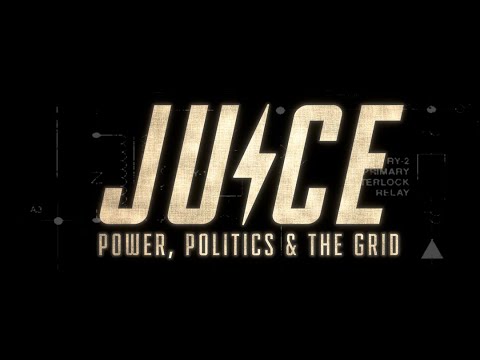Green Watch
Juice: Power Politics and the Grid
The Reliability Error
A movie review

The Reliability Error

Film Review: Juice: Power Politics and the Grid (full series)
The Reliability Error | The Commodity Error | Victory?
Summary: In his latest docuseries energy journalist Robert Bryce examines the dangerous destabilization of the American electricity grid due to flawed policy choices, such as an overreliance on unreliable, weather-dependent wind and solar power systems. In dozens of interviews with energy experts, policy advocates, and even the victims of weather-dependent power corporations, he points the way to an inspiring solution in zero-carbon, abundant, and super-reliable nuclear power.
Juice: Power, Politics and the Grid premiers for free on YouTube on Wednesday, January 31. For a trailer and more information, go to @JuiceTheSeries on YouTube.
Robert Bryce is an energy journalist and electricity evangelist. As a talented podcaster, filmmaker, author, and Substack writer, he preaches that access to reliable and affordable power, or lack thereof, explains where you stand in the planet’s prosperity pecking order. In his first documentary, Juice: How Electricity Explains the World, he proved his titular premise by visiting some of the billions of people still living in primitive poverty, where even lighting is a luxury.
In his new five-episode sequel, Juice: Power, Politics and the Grid, Bryce points cameras at the wealthy industrialized world—America in particular—and demonstrates how we’ve also come dangerously close to descending into darkness. He ends on the hopeful note that nuclear power is the route home to reliability. The new docuseries was directed by Tyson Culver.
Nearly 150 years after Thomas Edison obtained his first light bulb patent, Bryce’s career shouldn’t need to exist. We should all know how lucky we are to have reliable electricity. But it is our misfortune that his work is more necessary than ever because wretched energy policy is harming good Americans. Happily, Bryce is good at his job.
“I have a feeling that people think if we didn’t have electricity that we’d talk more, we’d sit around the wood stove and chat,” said Meredith Angwin in the first episode.
“NO!” she continued, “you’d eat less!”
The author of Shorting the Grid: the Hidden Fragility of our Electric Grid, Angwin is one of many prescient people featured throughout the new Juice.
In February 2021, the Texas electrical grid was pushed to the brink during the severe cold snap inflicted by Winter Storm Uri. Eighty percent of the state lost power at some point, and the hopeful estimate is that only 200 people died.
Although the real death toll is probably higher, the message in Juice is that Texans were lucky. At one point the Electric Reliability Council of Texas (ERCOT) electrical grid was five minutes from total failure. It could have taken a month or more to get it going again, leading to what the docuseries predicted would have been a “mass casualty event.”
In Shorting the Grid, published a mere four months before ERCOT almost collapsed, Angwin warned the catastrophe was possible, not just in Texas, but in all of America.
The Reliability Error
In the first episode, Juice showed video of left-leaning politicians and journalists who wagged their fingers and claimed ERCOT’s collapse should be blamed on misguided free-market fundamentalism. But Bryce also showed right-leaning critics who claimed ERCOT had crashed because addlebrained climate alarmists loaded it up with unreliable, weather-dependent wind turbines and solar panels.
The truth is that it required the worst of both to wreck ERCOT and all the rest of the nation’s regional power grids. These supposed political rivals have been operating in collusion with each other for decades.
Building and relying on weather-dependent energy systems contributed one piece of the problem. Intermittently available wind and solar power have a nasty habit of not reporting for work when extreme weather events spike demand. (Later in Juice, Madi Hilly of the Campaign for a Geen Nuclear Deal, points out the absurdity of those who worry over climate change while literally relying on the climate—the weather— to provide their power.)
An otherwise marvelous triumph of the market inflicted another piece of grid vulnerability. The good news is that America’s natural gas renaissance replaced high-carbon, higher cost coal with low-carbon, lower-priced gas. In 2001, coal-fired power stations provided 50 percent of total U.S. electricity, and natural gas powerplants just 17 percent. By 2022, that had almost entirely flipped to 40 percent natural gas and 19 percent coal.
But those discarded coal stations stored backup fuel on site, while natural gas is mostly delivered on-demand, just in time, via pipelines, and it is also used for heating in millions of homes. Bitter cold snaps stress the supply and compromise the reliability of the gas-fired power stations. Those discarded coal stations were effectively immune to weather fluctuations and were an important backstop against blackouts. (Even more reliable are zero-carbon nuclear power stations, but that’s getting ahead of the story.)
ERCOT and its customers paid the heavy price for all of these mistakes during February 2021.
But bad as it was, ERCOT isn’t even the grid most at risk. The Midcontinent Independent Systems Operator (MISO) grid roughly covers Minnesota east through Michigan, and south through Louisiana. A recent federal estimate of reliability concerns identified MISO as now being at “high risk” of blackouts even during “normal peak” conditions.
In the next installment, favoring energy pricing over reliability is making the electric grid increasingly fragile and vulnerable to prolonged blackouts.



